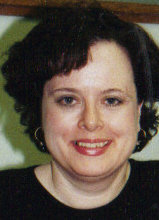Visitors to the mausoleum, later transformed into the Church of Santa Costanza, can puzzle over the images if they don’t know about Constantina’s two arranged marriages to pagan rulers, and the religious syncretism in fourth-century Rome. Christianity and paganism co-existed and even mingled in art, culture, and religious practices.
At one point art historians noted that midst the putti (cherubs) picking, transporting, and stomping grapes on the mausoleum’s ceiling, the building’s four niches suggested the form of a cross. Artists color coordinated the twelve pairs of columns in red and green marble to highlight the points of a cross. It’s as if the cross quietly but securely superseded the pagan and syncretic activity, taking a revered place above it all.
When looking at early Christian art, people sometimes drew their own conclusions. Was it Christian or pagan or both? Mixed images and metaphors kept them guessing. But as sacred art developed, artists and patrons erased doubt about its origin and meaning. For the most part, Christian art became thoroughly Christian.
Toward the end of the tenth century, Gero, the archbishop of Cologne, Germany, commissioned a crucifix for his cathedral that demanded attention to Christ’s death. Over six feet tall, the painted wood sculpture featured a lifeless Christ still hanging on the cross. Christ’s skin sagged from holding the body’s weight and his stomach bulged. His head hung down, with the cratered eyes and contorted lips of prolonged suffering.
Later in the fourteenth century, the artist Giotto di Bondone painted a barrel-vaulted room built over Roman ruins in Padua, Italy. It functioned as a family chapel. Walking toward the altar, the life of Mary and the story of her Son lined the walls, divided into rectangular panels. Giotto successfully distilled each image into an emotionally complex yet unmistakable scene. Viewed vertically, each set of three images foreshadowed or related to the others. Wherever visitors carefully stepped in the Scrovegni Chapel, however close they scrutinized the Gero crucifix, they didn’t doubt. This was Christian art. It poignantly expressed Christian beliefs.
Through many centuries and styles, from Late Antiquity through the Baroque, this creativity promoted the Church’s doctrines, morality, and history. Didactic and symbolic, narrative and representational, Christian art taught, chastised, encouraged, reminded, and celebrated Christians. But mostly, it told and retold the miraculous story of Christ.
Learn more about Christian art in Judith Couchman's book, The Art of Faith: A Guide to Understanding Christian Images (Paraclete Press).

 RSS Feed
RSS Feed



